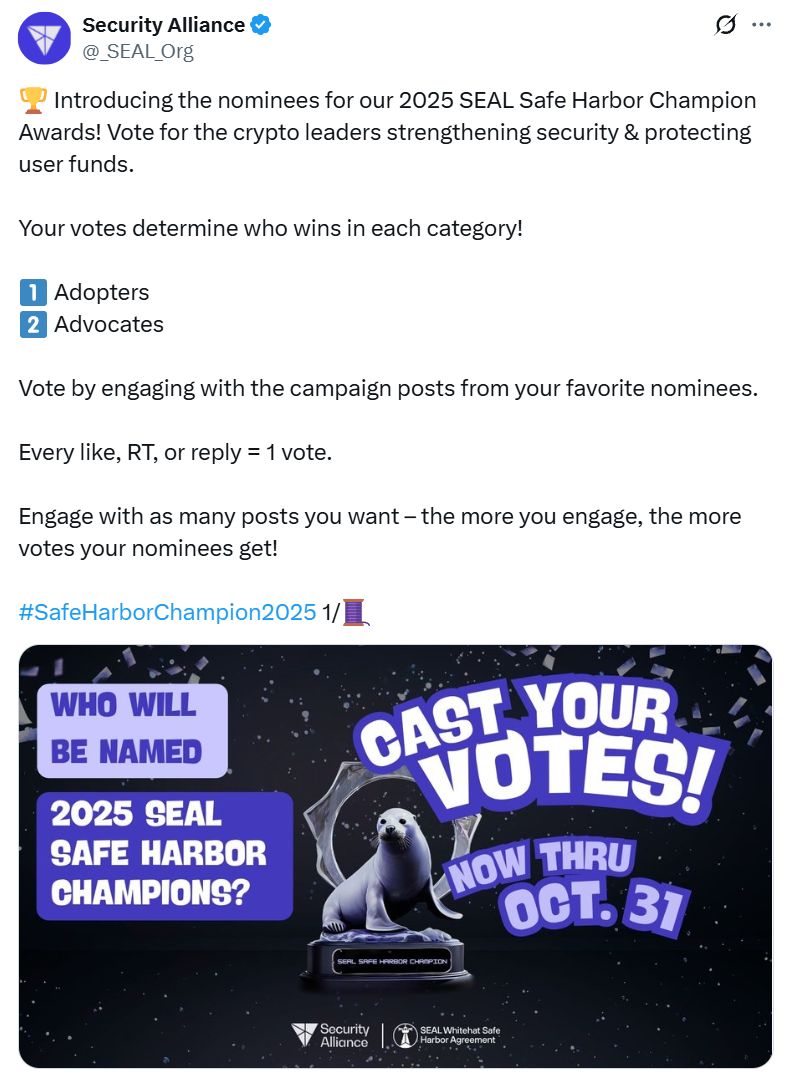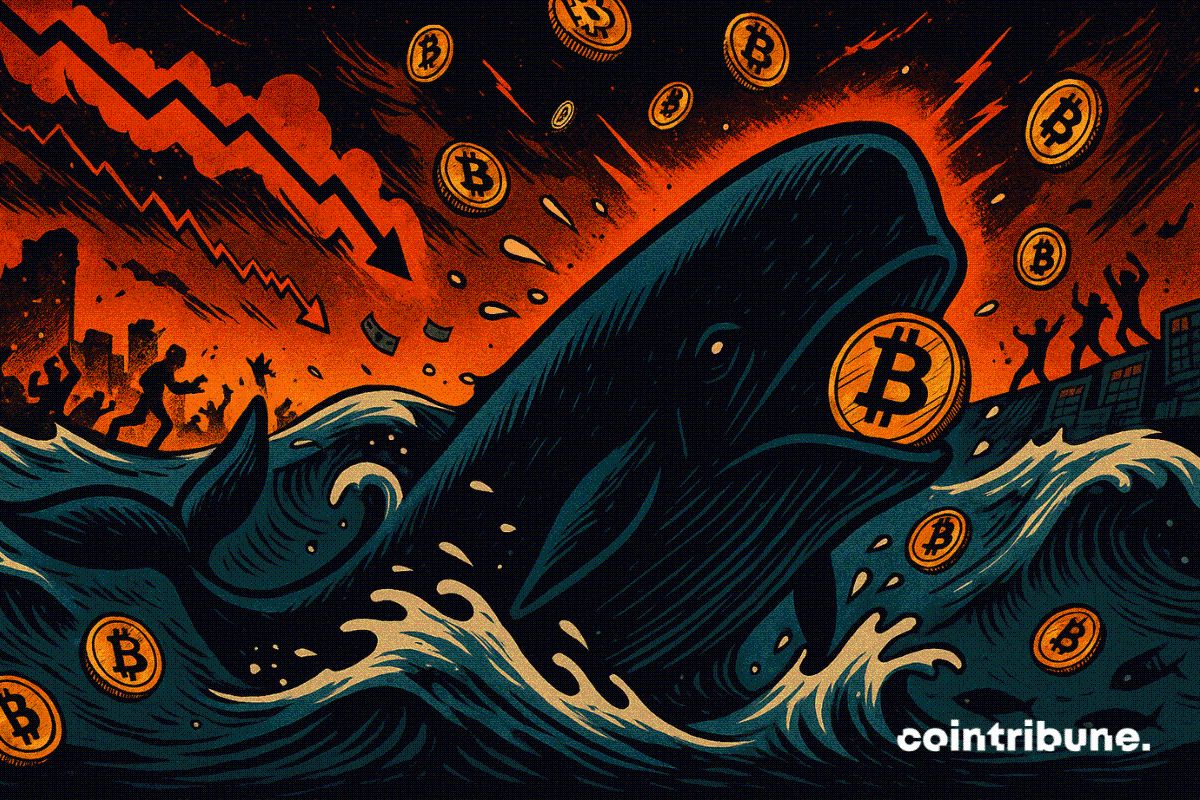SEAL Safe Harbor is a legal and operational framework that lets vetted white hat hackers temporarily secure stolen crypto and return funds within 72 hours, with a standard 10% bounty (capped at $1M). It gives protocols and researchers clear procedures and legal protections to stop live exploits.
-
29 firms recognized for adopting SEAL Safe Harbor in 2025
-
Safe Harbor requires recovered funds returned within 72 hours; bounty set at 10% (max $1M).
-
SEAL reports volunteers and platforms have helped protect billions; Immunefi cites >$25B in customer funds safeguarded.
SEAL Safe Harbor: 29 firms adopt the Safe Harbor Agreement to protect user funds during live exploits — read nominees, rules, and how to support or vote now.
What is SEAL’s Safe Harbor Agreement?
SEAL Safe Harbor is a formalized ethical-hacking framework that defines legal and operational steps for white hat interventions during active crypto exploits. It instructs protocols and researchers how to coordinate, requires quick return of funds, and sets a standard bounty to encourage timely, lawful defense of user assets.
How does the Safe Harbor framework protect white hat hackers?
Safe Harbor reduces legal uncertainty by predefining consent, verification, and post-recovery steps. Protocols that adopt the agreement publish recovery addresses and on-chain policies; white hats follow onboarding checks (KYC, OFAC) and return funds within 72 hours to qualify for rewards. This protection lowers hesitation and increases coordinated responses.
SEAL recognizes 29 companies — who joined and why?
SEAL announced its first Safe Harbor Champions 2025 list recognizing 29 organizations as either “adopters” or “advocates.” Nominees include major DeFi platforms, security vendors, venture firms, and legal partners. The program signals a shift from fragmented defense to a coordinated industry standard aimed at preserving customer assets.
Why does Safe Harbor matter for crypto security?
Safe Harbor creates predictable incentives and legal guardrails, making ethical intervention more likely and reducing exploit profits. Industry adopters report measurable benefits: security platforms say adoption helped many researchers reach significant earnings from bug bounties while protecting billions in customer funds.
Which notable white hat actions illustrate the framework’s value?
Volunteer SEAL hackers and other good-faith actors have a track record of stopping large losses: a MEV-based interception recovered $2.6M from the Morpho App, another return delivered $5.4M to Curve users, and coordinated responses limited fallout from a JavaScript supply-chain event to under $50 in the first 24 hours.
Plain text citation: a public tweet of thanks from banteg referenced c0ffeebabe.eth’s work in July 2023 — note presented as plain text, not an external link.
How do protocols adopt the Safe Harbor framework?
Protocols join SEAL’s onboarding waitlist and, if approved, receive a compliance guide. Adoption steps typically include publishing recovery addresses across supported chains, integrating the Safe Harbor language into user terms, and preparing internal processes for verification and payout.
 Source: Security Alliance
Source: Security Alliance
Frequently Asked Questions
How long do white hats have to return funds under Safe Harbor?
Under the Safe Harbor rules, recovered funds must be returned within 72 hours to qualify for the standard bounty and legal protections, with verification and KYC/OFAC checks required before payout.
Who oversees payouts and legal protections for white hats?
Verification is handled by the adopting protocol and SEAL-aligned processes; payouts occur only after verification. The Security Research Legal Defense Fund (SRLDF) can provide legal-defense funding for good-faith researchers if needed.
Key Takeaways
- Standardized legal protection: Safe Harbor reduces legal risk for white hats during live interventions.
- Operational rules: Funds must be returned in 72 hours; bounty is 10% of recovered funds (capped at $1M).
- Industry momentum: 29 nominees show growing adoption and a shift toward coordinated defense standards.
Conclusion
SEAL Safe Harbor represents a practical step toward institutionalizing ethical defense in crypto, aligning legal protections, operational steps, and incentives for white hats. Continued adoption by protocols and security platforms should strengthen collective resilience and reduce exploit profitability. Follow SEAL’s public announcements and consider supporting Safe Harbor adoption in your protocol governance.
Published: 2025-10-01 · Updated: 2025-10-01 · Author: COINOTAG
Plain text reference: thank you c0ffeebabe.eth for returning the funds ❤️ pic.twitter.com/ltEKSvZo80 — banteg (@bantg) July 31, 2023


